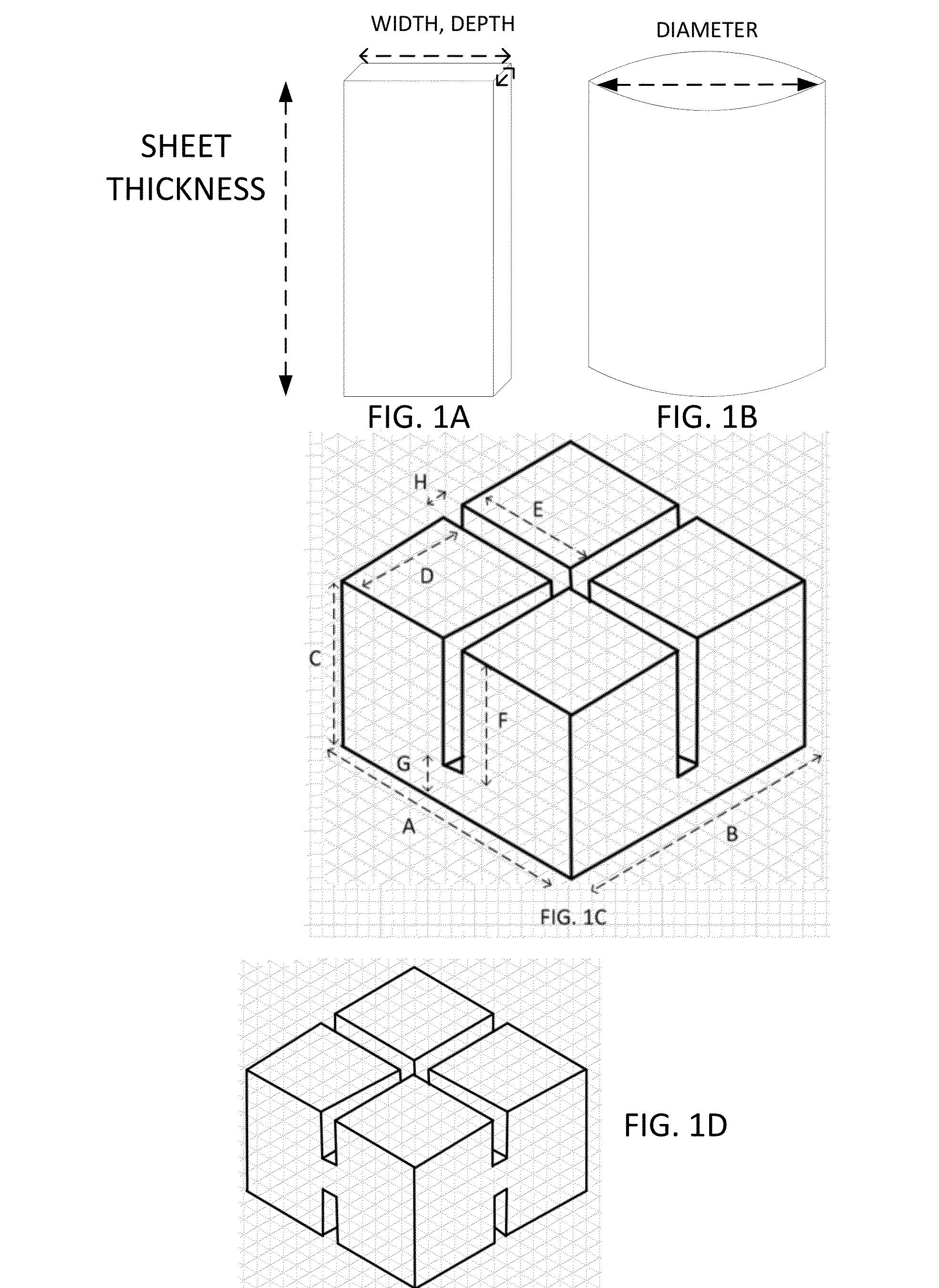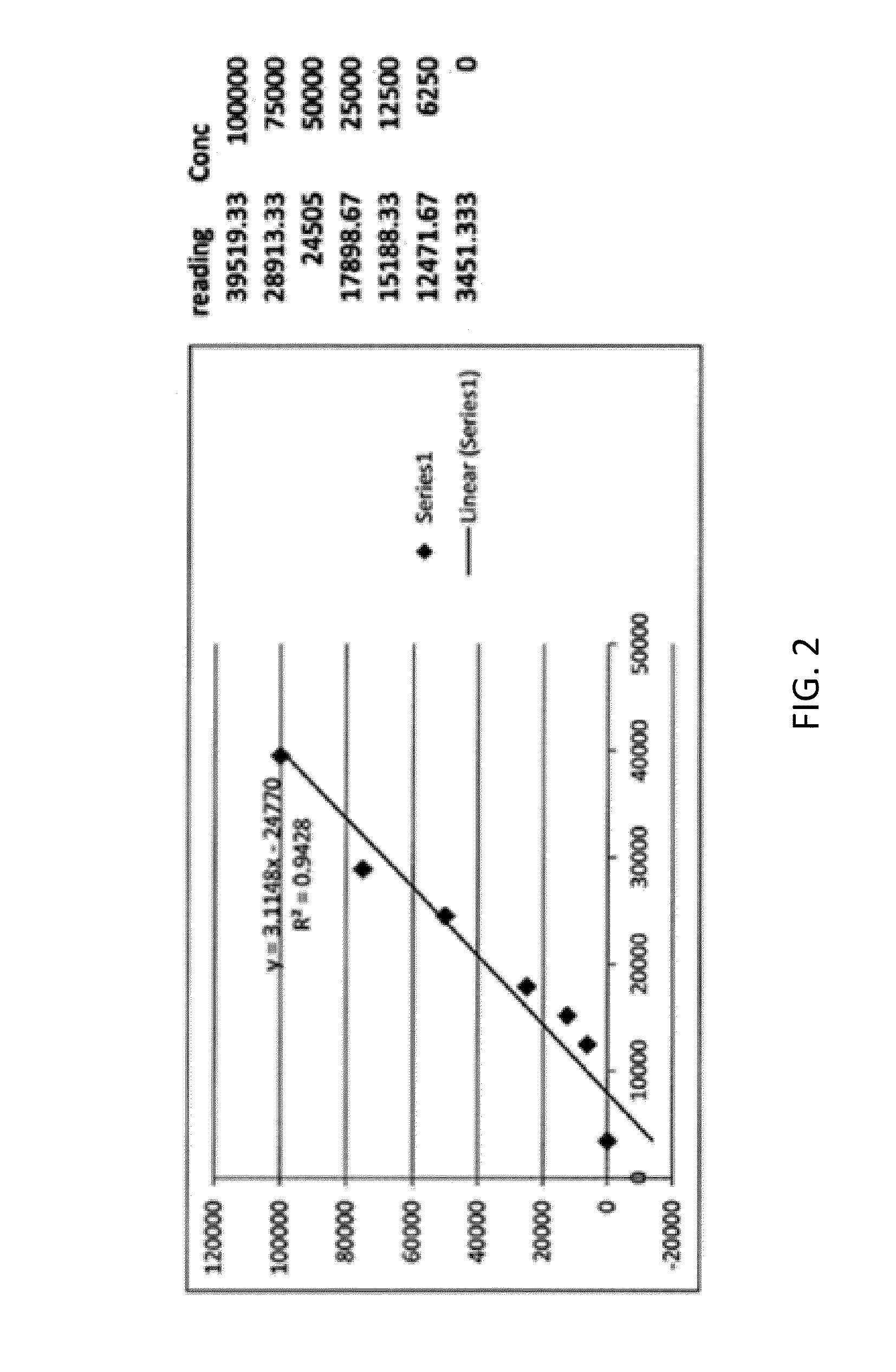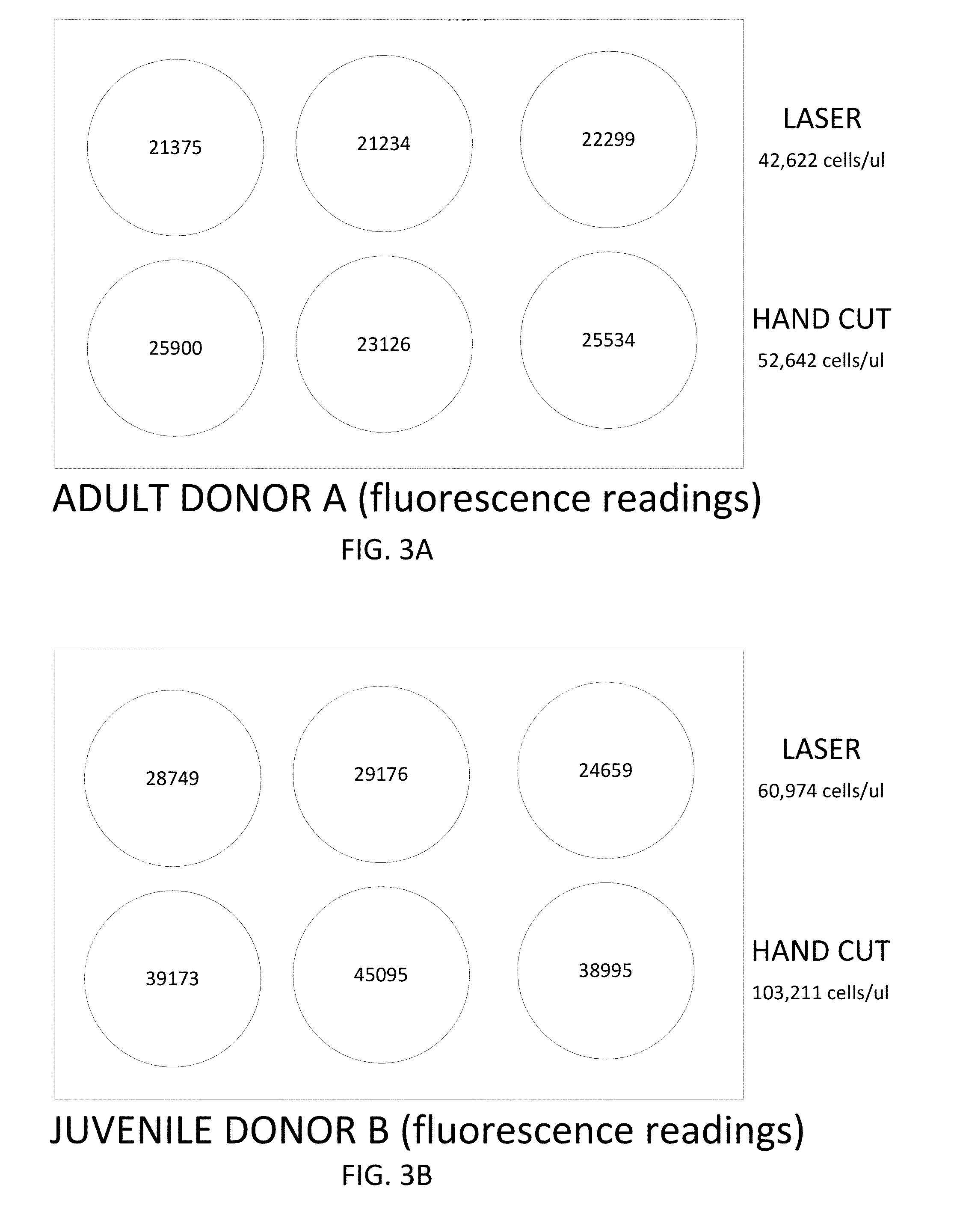Minced cartilage systems and methods
- Summary
- Abstract
- Description
- Claims
- Application Information
AI Technical Summary
Benefits of technology
Problems solved by technology
Method used
Image
Examples
example 1
Laser Cutting to Generate Minced Cartilage
[0102]Laser cutting techniques can provide a cost effective approach for the preparation of minced cartilage particles, with a decreased opportunity for tissue contamination during the mincing process. As described below, minced cartilage particles, tiles, mosaics, and the like as prepared by laser processing techniques showed cell viability results that were comparable to the cell viability results observed when using manual cutting techniques. By using a laser to prepare minced particles, cost, contamination, and processing time can be reduced. Further, it is possible to provide increased amounts of donor tissue product.
[0103]Tissue cutting experiments were performed using an Epilog Zing 30 Watt CO2 engraving laser on juvenile or adult cartilage slices. Table 1 shows the results of the tissue cutting experiments at varying speeds, powers, and frequencies.
TABLE 1Laser SettingsLaser SettingsSpeed(%)Power(%)Frequency(Hz)Result / outcome:A. Low ...
example 2
Characterization of Minced Articular Cartilage From Adult or Juvenile Donors
[0105]Fresh cadaveric adult and juvenile articular cartilage tissue samples were processed using either a laser cutting protocol or a hand cutting protocol. The adult donors were between fifteen and thirty six years of age, and the juvenile donors were between the ages of three months and 12 years. For the laser cutting method, the cartilage was shaved into thin slices (e.g., sheets having a thickness of 1-5 mm) using a scalpel, and the sliced sheets were minced into small particles (e.g., 1 mm, 2 mm, and / or 3 mm particles) using an Epilog Zing 30 Watt engraving laser. The laser cutting pattern was designed with a CorelDRAW® graphics software program. The cartilage was minced into square shaped particles, using energy levels and other laser parameters as described in Table 1. During the laser cutting procedure, the cartilage was maintained in a hydrated state. The minced particles were then washed with a pho...
example 3
12-Week Explant Study to Characterize Cartilage Samples
[0125]To further compare chondrocyte outgrowth and matrix production between adult and juvenile donors, a 12-week explant study was performed. Three research consented adult donors and two research consented juvenile donors were obtained. Samples were sliced by hand into 1 mm thick sheets and laser cut into 2 mm cubes. The samples were measured into 0.3 ml aliquots (5 samples per donor) and glued to a 12 well plate using TISSEEL (Baxter, Deerfield, Ill.) for a 12 week explant study to be performed. A 1:10 ratio of PrestoBlue® (Life Technologies, Carlsbad, Calif.) to media was used for weekly cell counting. Collagen type II immunohistochemistry was performed on samples after the 12 week time point, as well as sulfated glycosaminoglycans (sGAG) assay (Kamiya Biomedical Company, Seattle, Wash.), hydroxyproline assay (BioVison, Milpitas, Calif.), and DNA analysis with a Pico Green Assay (Invitrogen, Grand Island, N.Y.). All outcome ...
PUM
| Property | Measurement | Unit |
|---|---|---|
| Fraction | aaaaa | aaaaa |
| Fraction | aaaaa | aaaaa |
| Fraction | aaaaa | aaaaa |
Abstract
Description
Claims
Application Information
 Login to View More
Login to View More - R&D
- Intellectual Property
- Life Sciences
- Materials
- Tech Scout
- Unparalleled Data Quality
- Higher Quality Content
- 60% Fewer Hallucinations
Browse by: Latest US Patents, China's latest patents, Technical Efficacy Thesaurus, Application Domain, Technology Topic, Popular Technical Reports.
© 2025 PatSnap. All rights reserved.Legal|Privacy policy|Modern Slavery Act Transparency Statement|Sitemap|About US| Contact US: help@patsnap.com



